DIY wool dryer balls are easy to make and are a simple, ecological way to soften clothes and reduce dryer time and static cling.
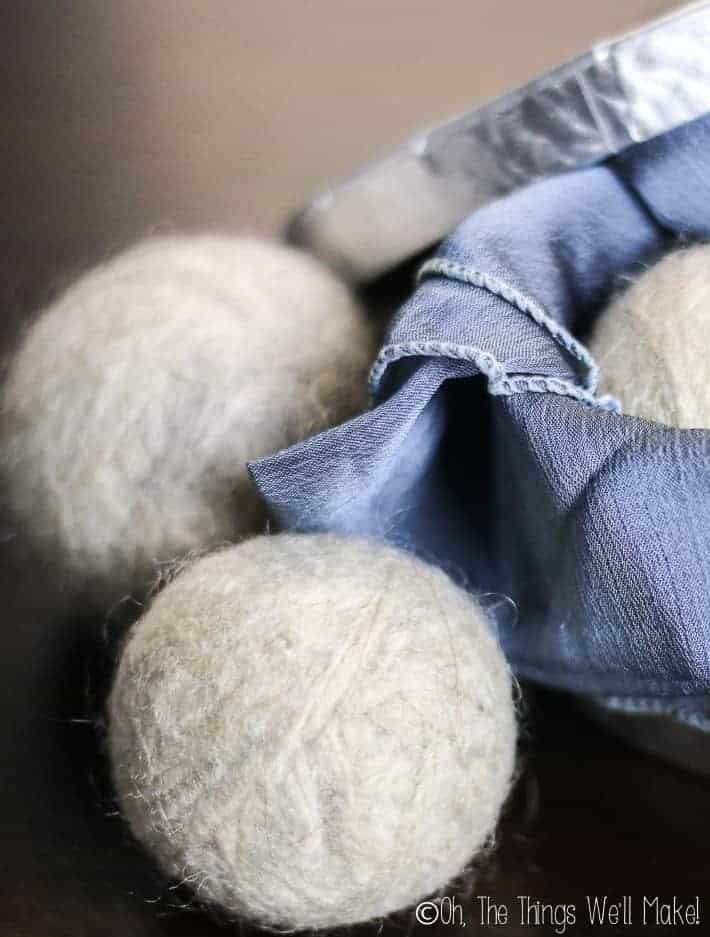
Lately, I’ve been having to do lots of laundry. Lots of it!
From a dirty school uniform that needs to be clean and dry by the next school day to wet sheets that need to be clean and dry and ready for the next night, just in case. I guess that just goes with the territory of being a mom to a young boy. Can you relate?
Just like with everything else in my life, I’ve been looking for ways to do all of that laundry in a simple, more natural way. Granted, hanging clothes on the line would be the most eco-friendly way of drying my laundry, but, while I do use the clothesline a lot, let’s be honest, I also use the dryer a lot.
That’s why, last year when I read about wool dryer balls, and how they were a great replacement for chemical-laden dryer sheets, I wanted to give them a try.
If you don’t use a dryer or want natural alternatives to fabric softener, check out my post on DIY natural fabric softeners.
How to do wool dryer balls work?
I’ve read a few different theories as to how wool dryer balls work.
First of all, they go into the dryer dry already. For that reason, they absorb some of the humidity of the wet clothes, helping to slightly reduce drying time.
As the balls hit the clothes in the dryer, they are said to soften them because of the gentle friction of the balls on the fibers of the fabrics. They also are said to open pockets of air between the articles that help with quicker drying times.
Do wool dryer balls work?
Wool dryer balls all are said to help with a number of things in the dryer. Not only are they supposed to soften the clothes and reduce static cling, but they are also supposed to reduce time in the dryer.
Reducing static cling without fabric softener sheets
Some people claim that wool balls help reduce static cling, others say they don’t work at all for that purpose. I don’t really have problems with static cling in my laundry, so it’s hard for me to judge how well they work.
I suspect that I don’t have problems with static cling because I don’t have many synthetic fabrics at my house. My son has atopic dermatitis, and my husband has issues with wearing polyester and other synthetic fabrics ever since he was burned on over 30% of his body in an accident on his fishing boat. I’m on the crunchy side and don’t think synthetic fabrics are particularly healthy to be wearing, so I try to buy mostly natural fabrics too. In the end, there isn’t really anybody at my house wearing clothing with a high percentage of synthetics. It may also have something to do with the fact that there is a lot of humidity in my area, or, perhaps, it’s because I don’t have my dryer dry the clothes as completely as others. Any of those things can contribute to how much static cling builds up in your dryer.
If you have problems with static cling, though, and find that the wool balls aren’t helping, you can try several non-chemical ways to help discharge it so it isn’t a problem.
One way to reduce static cling in the laundry is to add a ball of aluminum foil to the dryer along with the wool balls. Another way to do it is to use two safety pins. Add one pin to one of the balls, and another to a different fabric in the dryer. The idea is that they help to discharge whatever static electricity is building up in the dryer.
Do wool balls reduce drying time?
To be honest, I never really stick around to see how much time my clothes are in the dryer, so I don’t know by how much they reduce drying time. In any case, it would really be hard to determine that scientifically in your house. There are so many factors that can affect the drying time from load to load.
While I’m not completely sure that they are working, I don’t have problems with static and my laundry seems soft enough, so I don’t miss using dryer sheets. In fact, the smell of dryer sheets really bothers me now. I do like to add a little bit of fragrance to my laundry, though, so I add a few drops of lavender essential oil to one of the dryer balls each time I dry my clothes.
If you find that the wool balls aren’t helping, you may need to add more of them or use larger wool balls. I’ve seen it suggested that you should use somewhere between 4-8 wool balls in each load, depending upon how many clothes you are trying to dry. Overloading the dryer, though, will not only work against them but will also make it more likely for you to end up with static cling.
Where to get wool dryer balls
Wool dryer balls aren’t something that I can find around here, and looking them up on the Internet, I was surprised to find that they are a bit pricey to buy already made. (I have since found some more reasonably priced wool dryer balls for those who don’t want to DIY it!)
So, of course, as usual, I looked to see if I could make them myself. I didn’t figure it would be difficult to do because felting wool is a fun and easy project. Sure enough, a search of the Internet revealed that many other people had already been making wool dryer balls themselves.
Taking advantage of an old wool sweater, I set out to make my own dryer balls. You can buy a skein or two of wool, of course, but for some reason, I can’t find it around here. While they seem to call all yarn “Lana,” the Spanish word for wool, all of it at the local stores seems to be acrylic. For this project, though, it’s important that you use natural wool yarn or it won’t felt correctly into a solid ball, and it won’t do its job in the dryer either.
I’d also like to suggest that you use a light or neutral color so as not to risk accidentally dyeing your clothes with them.
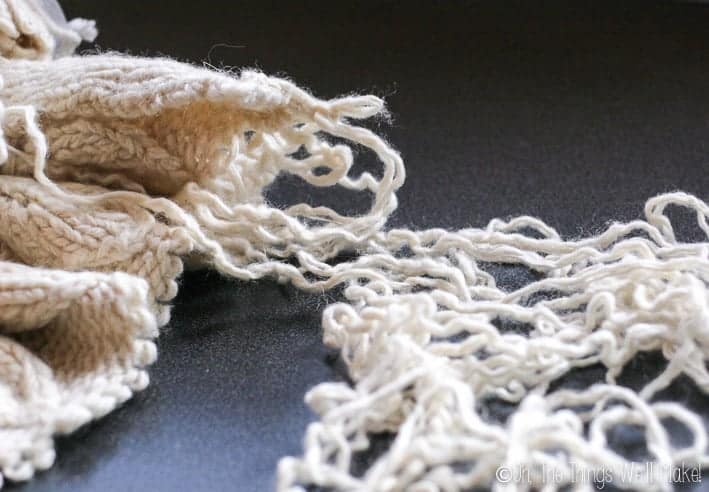
luckily, I had an old, oversized wool sweater that I had already started to unwind for use of the wool in other projects. I had knitted myself some mittens, and couldn’t bring myself to throw away the rest of the wool sweater, especially when wool yarn is so difficult to find here.
Every once in a while my borderline hoarder tendencies (as can be evidenced by my baby keepsake quilt) pay off. Because I can never find craft supplies here or non-acrylic yarn, I saved an ugly wool sweater just to use the natural wool for other projects. I unraveled enough of the sweater to make myself 6 fuzzy wool dryer balls, which seems like the perfect number of balls to use in the dryer each time with the size loads I usually dry.
See how easy it is…
How to make DIY Wool dryer balls
1. Roll some wool yarn into a ball. To do it, begin by wrapping some yarn around a few of your fingers several times.
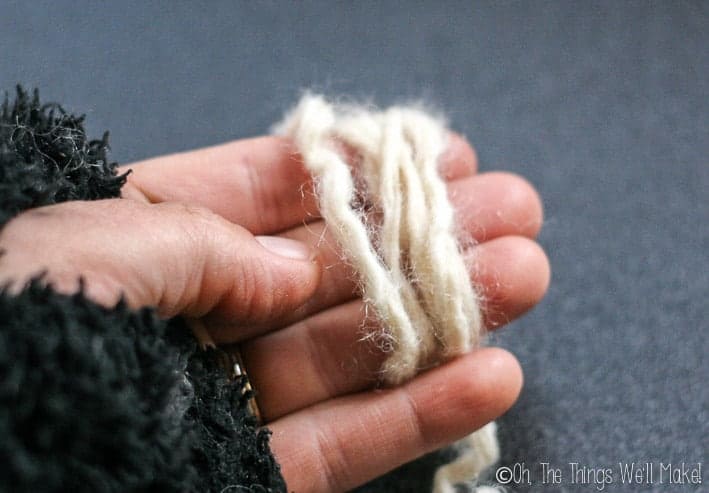
2. Pull the loops of yarn off your fingers and start to wrap more yarn around your loops, this time in the opposite direction.
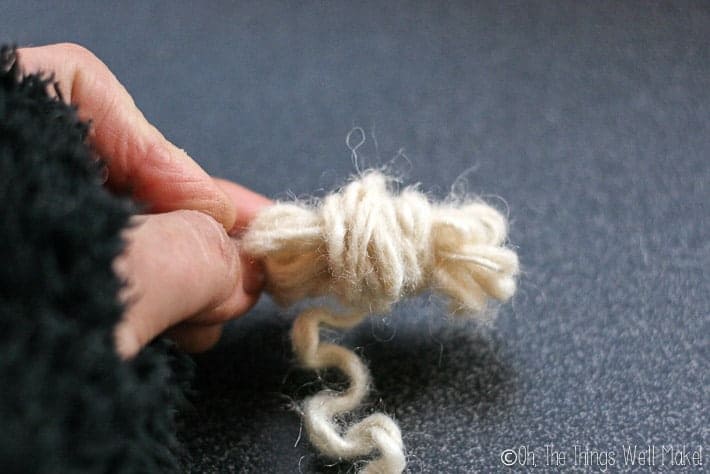
3. Continue to wrap yarn around and around, changing directions as needed to form a symmetrical ball.
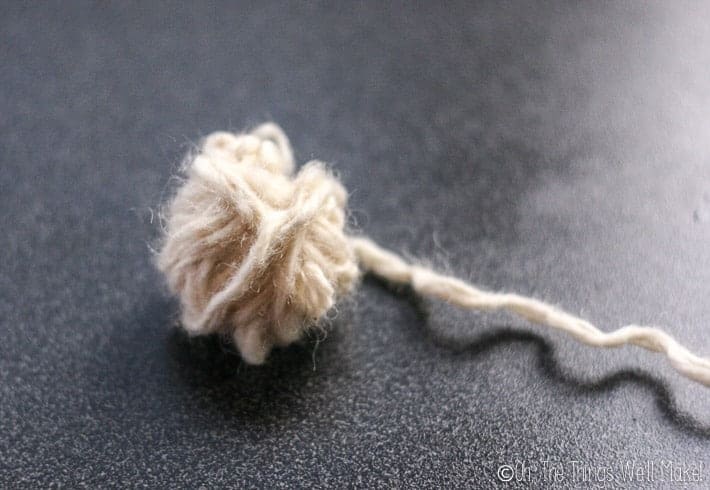
4. When you have a ball around 6cm in diameter, you can stop and cut the yarn. If you want to make larger sized wool balls, wind more yarn around until you reach the desired size.
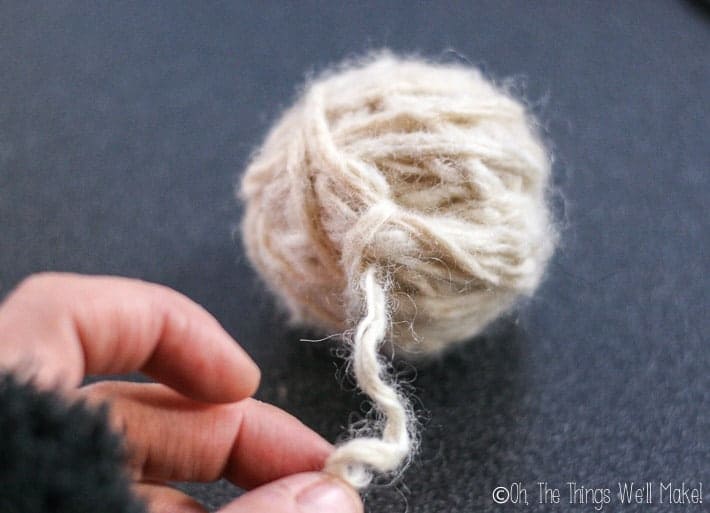
5. Pull the free end of the yarn into the center of your ball. You can use a crochet hook to pull it into the center of the ball, or just poke it into the center of your ball of yarn.
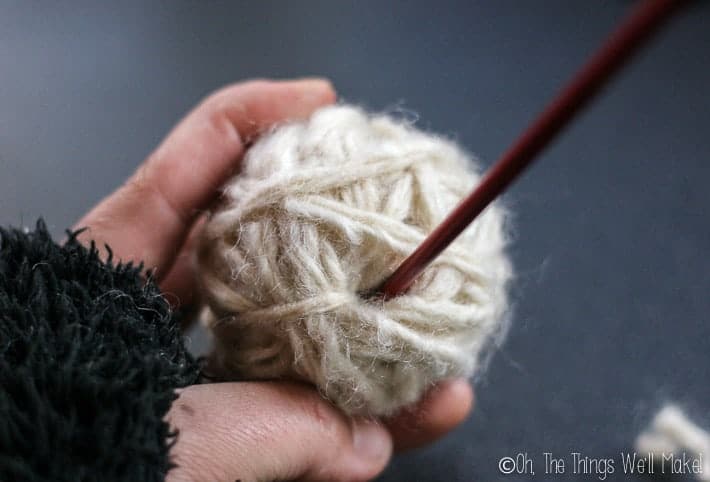
6. To felt your balls, you’ll need to wet and dry them at high temperature. You can either wash them in hot water in the washing machine or boil them over the stove like I did. If you choose to use your machine, you should put your balls in nylons or socks to keep them from unraveling.
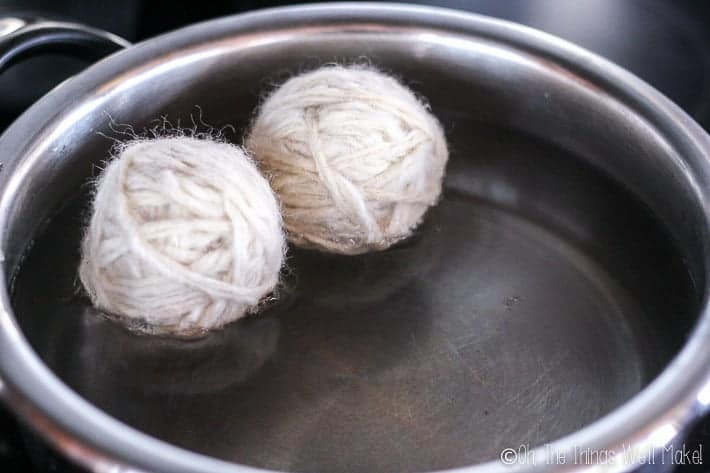
5. Dry the wool balls in the dryer at high heat setting. It’s a good idea to put them in nylons or socks to keep them from unraveling. To be honest, though, I didn’t bother and only one of mine slightly unraveled. I think boiling them in water helped begin to felt them enough for them to stay together. That said, I still recommend you wash and dry them in socks or nylons at least the first time, just to be on the safe side. (Do as I say, not as I do!)
6. To make sure they are really felted together enough to stay together when using them, it’s a good idea to send them through the washer and dryer at least one more time.
You’re finished!
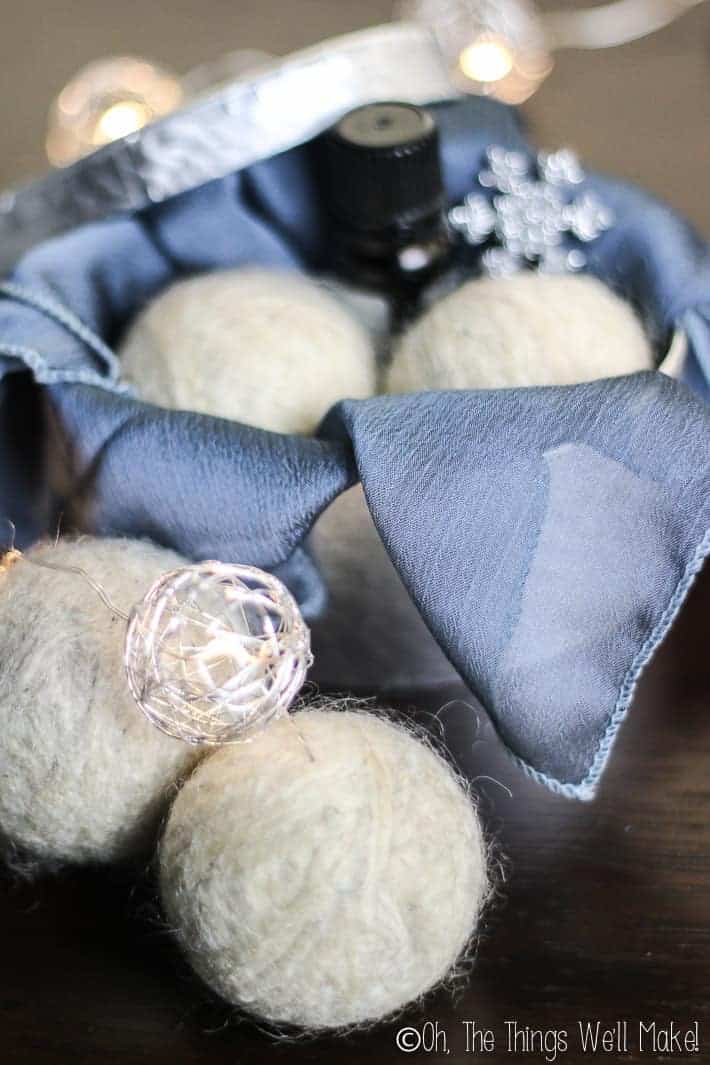
See, that wasn’t difficult at all!
Note that I’ve been using the DIY wool dryer balls in the photos for just over a year now. That’s why they look compact and thoroughly felted together. Just finished wool balls will look more like a ball of yarn at first, but should still hold up through the dryer and be perfect for use.
I use 5-6 balls at a time and put a few drops of lavender essential oil on one of them each time. (I have since been informed that there is a risk, albeit small, of EO’s igniting in the dryer when used in dryer balls. When used in such small amounts, it’s highly unlikely, but do so at your own risk! It may be better to scent your clothes with homemade lavender sachets in your closet instead!)
Now you’re ready to use them, or give them away as gifts!
I hope you love these DIY wool dryer balls as much as I do!
 Español
Español
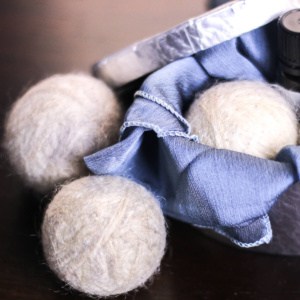
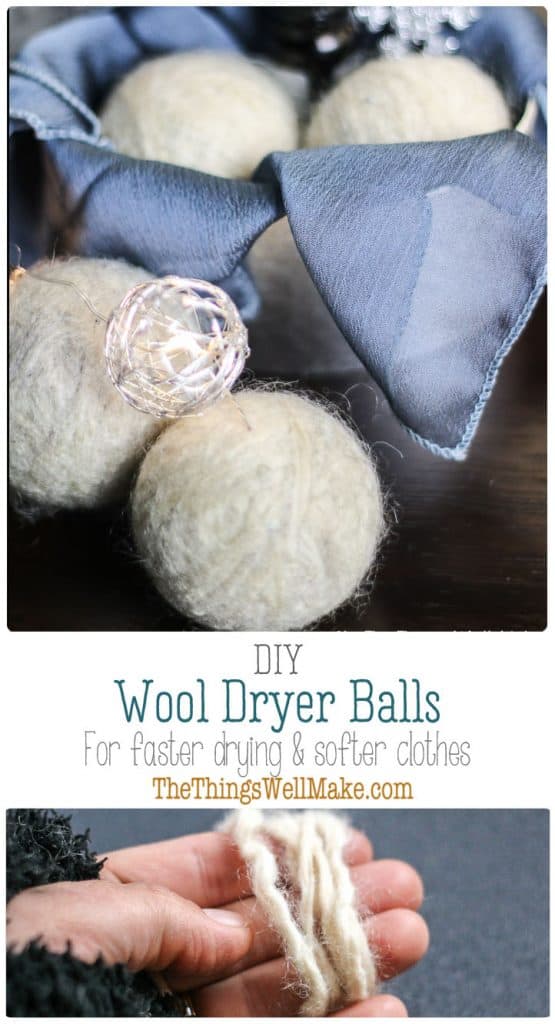
 Homemade Lavender Sachets
Homemade Lavender Sachets
granny
tennis balls work also.
Tracy Ariza
Thanks for the tip!
Kim
How long did you boil them for?
Thanks
Tracy Ariza
Hi Kim,
To be honest, I made them so long ago that I don’t really remember.
I don’t think you really have to boil them for very long at all. Maybe 5-10 minutes?
They will be going through the dryer, and that will help felt them together.
Especially if you help hold the balls together in an old nylon stocking or tights (I’d put a few in the same stocking, putting knots between each ball so they don’t touch each other), you should be fine with just boiling them for a little while. The important thing is that they get wet and subjected to heat for a long time, which they will in the dryer, whether you boil them or not. The boiling just helps move the process along more quickly, and ensures that the yarn already begins to stick to itself somewhat before you throw it in the dryer.
I hope that helps!